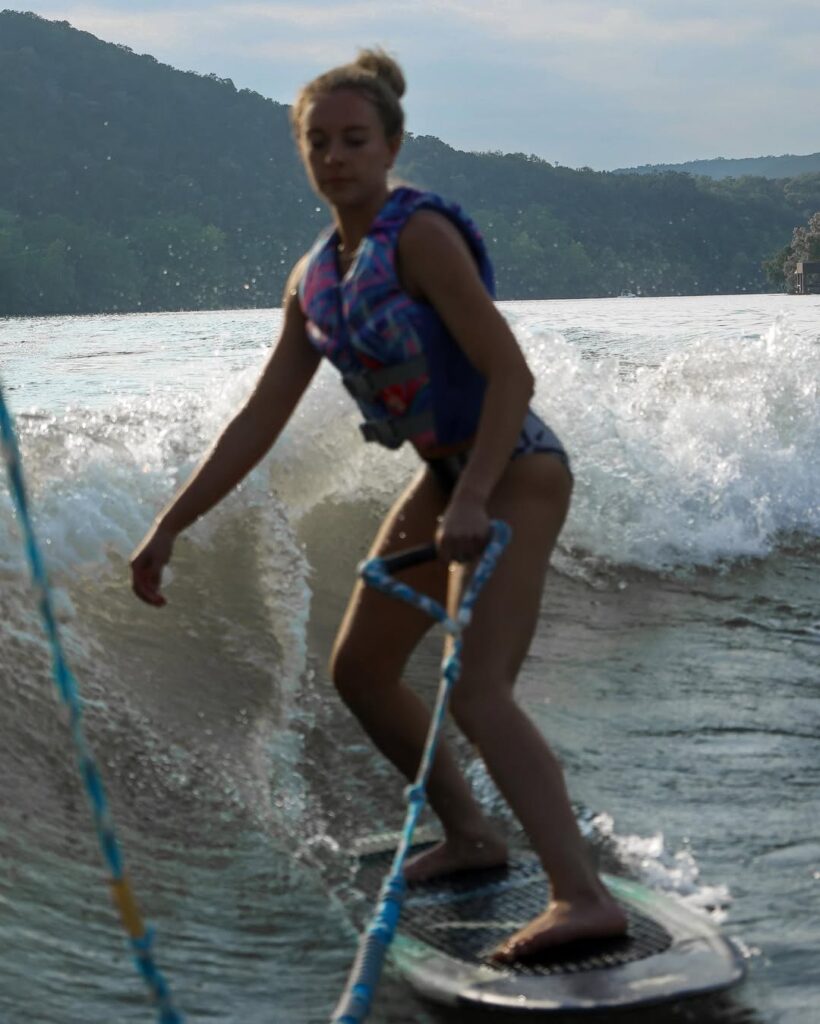Water skiing is one of those rare sports that perfectly blends adrenaline, balance, and breathtaking outdoor scenery. Whether you’re speeding across a glassy lake at sunrise or carving smooth turns behind a powerboat on a summer afternoon, water skiing delivers a unique thrill like no other. For both beginners and seasoned enthusiasts, it offers a full-body workout, a mental challenge, and — most importantly — a whole lot of fun.
In this article, we’ll explore the history, technique, gear, benefits, and sheer joy of water skiing, diving into why it remains a beloved pastime for millions around the world.

The Origins of Water Skiing
Water skiing dates back to 1922 when an 18-year-old named Ralph Samuelson from Minnesota wondered whether it was possible to ski on water. Using two boards as makeshift skis and a clothesline as a tow rope, Samuelson experimented on Lake Pepin until he finally succeeded. That day marked the birth of water skiing — and the beginning of a sport that would eventually grow into a global phenomenon.
Over the years, water skiing evolved from a backyard invention into a competitive sport. By the 1940s and 1950s, professional water skiing shows became popular attractions, especially in places like Florida and California. The sport gained enough attention to merit its own governing bodies, like USA Water Ski & Wake Sports and the International Waterski & Wakeboard Federation (IWWF).

What Makes Water Skiing So Exciting?
Water skiing is more than just standing on a pair of skis behind a boat — it’s a dance with speed, water, and balance. The feeling of gliding on top of the water is exhilarating. As the wind rushes past your face and the boat pulls you forward, there’s a freedom that’s hard to match. For those who love outdoor activities, water skiing offers the perfect mix of excitement and serenity.
Another exciting element is the versatility of the sport. There are different types of water skiing: slalom skiing (one ski), trick skiing (performing stunts and spins), and jump skiing (soaring off a ramp to achieve distance). Each discipline adds its own challenges and rewards, allowing skiers to grow and expand their skills.

The Gear You’ll Need
To get started in water skiing, you don’t need a ton of expensive equipment, but there are a few essential items:
1. Water Skis
There are two main types: combo skis (great for beginners) and slalom skis (used for advanced skiing on a single ski). Trick skis and jump skis are specialized gear for more experienced athletes.
2. Tow Rope
A strong, stretch-resistant rope connects the skier to the boat. The handle should be easy to grip and padded for comfort.
3. Life Jacket / Personal Flotation Device (PFD)
Safety is non-negotiable. A proper life jacket designed for water sports keeps you afloat and protected if you fall.
4. Boat
Most water skiing is done behind powerboats with enough horsepower to generate speed and wake. Boats should have mirrors, observer seats, and safety flags to communicate with other boaters.
5. Wetsuit or Rash Guard (Optional)
Depending on water temperature, a wetsuit can keep you warm and comfortable during longer ski sessions.

Getting Started: How to Water Ski
Learning how to water ski takes practice, patience, and a good sense of humor (because you will fall — and that’s okay!). Here’s a basic breakdown of how to get started:
Step 1: Starting Position
Start in the water with your skis pointed upward and your knees bent toward your chest. Hold the handle firmly with both hands. Let the boat slowly pull the slack out of the rope.
Step 2: Get Pulled Up
As the boat begins to accelerate, keep your arms straight and let the boat pull you up naturally. Don’t try to stand too quickly — the pull will lift you out of the water. Stay low and balanced as you rise.
Step 3: Find Your Balance
Once you’re up, bend your knees slightly, keep your arms straight, and look straight ahead (not at your skis!). Distribute your weight evenly and keep your core engaged.
Step 4: Enjoy the Ride

Use your legs to absorb bumps and keep your body relaxed. You can practice turning by gently shifting your weight side to side. Most beginners get the hang of it within a few tries.
Tips for Beginners
- Start slow: A slower boat speed (around 20–25 mph) is perfect for beginners.
- Practice body position: The biggest challenge is getting up. Watch tutorials or practice dry runs on land to understand the posture.
- Use wide skis: They provide more surface area and make balancing easier.
- Have a spotter: Someone on the boat should watch the skier at all times and communicate with the driver.
- Be patient: You’ll fall — and that’s part of the fun. Each try gets you closer to success.

Benefits of Water Skiing
Aside from being wildly fun, water skiing is also a great workout. It strengthens your legs, core, and arms while improving coordination and balance. Plus, it’s a full-body cardio activity that keeps you moving and engaged.
Mentally, water skiing can be therapeutic. Being out on the water, surrounded by nature, clears the mind and lifts your mood. It’s a perfect escape from screens, stress, and daily routines. Whether you’re carving through calm lake waters or zipping down a river, water skiing brings you fully into the moment.

Safety First
While water skiing is relatively safe when done properly, it does come with risks — like falls, equipment mishaps, or collisions. To stay safe:
- Always wear a life vest.
- Ensure the driver is experienced and follows boating laws.
- Use hand signals to communicate (e.g., thumbs up for faster, hand flat for slower).
- Avoid skiing in crowded or shallow waters.
- Check equipment regularly for wear and tear.

A Social and Competitive Sport
Water skiing is often a social experience. Families and friends spend entire weekends at the lake, taking turns skiing, swimming, and relaxing. It’s a great way to bond, cheer each other on, and share laughs (especially during those inevitable wipeouts!).
For those with a competitive streak, there are water skiing competitions at local, national, and international levels. These events include slalom races, jump distances, and trick routines — showcasing incredible athleticism and showmanship.
Final Thoughts
Water skiing is more than just a summer sport — it’s a way to connect with nature, challenge yourself, and share unforgettable moments with others. Whether you’re an experienced skier chasing personal bests or a beginner just trying to stand up for the first time, there’s something magical about skimming across the water with the sun on your face and the wind in your hair.
So grab your skis, find a boat, and get out there. The water’s waiting — and so is your next adventure.



